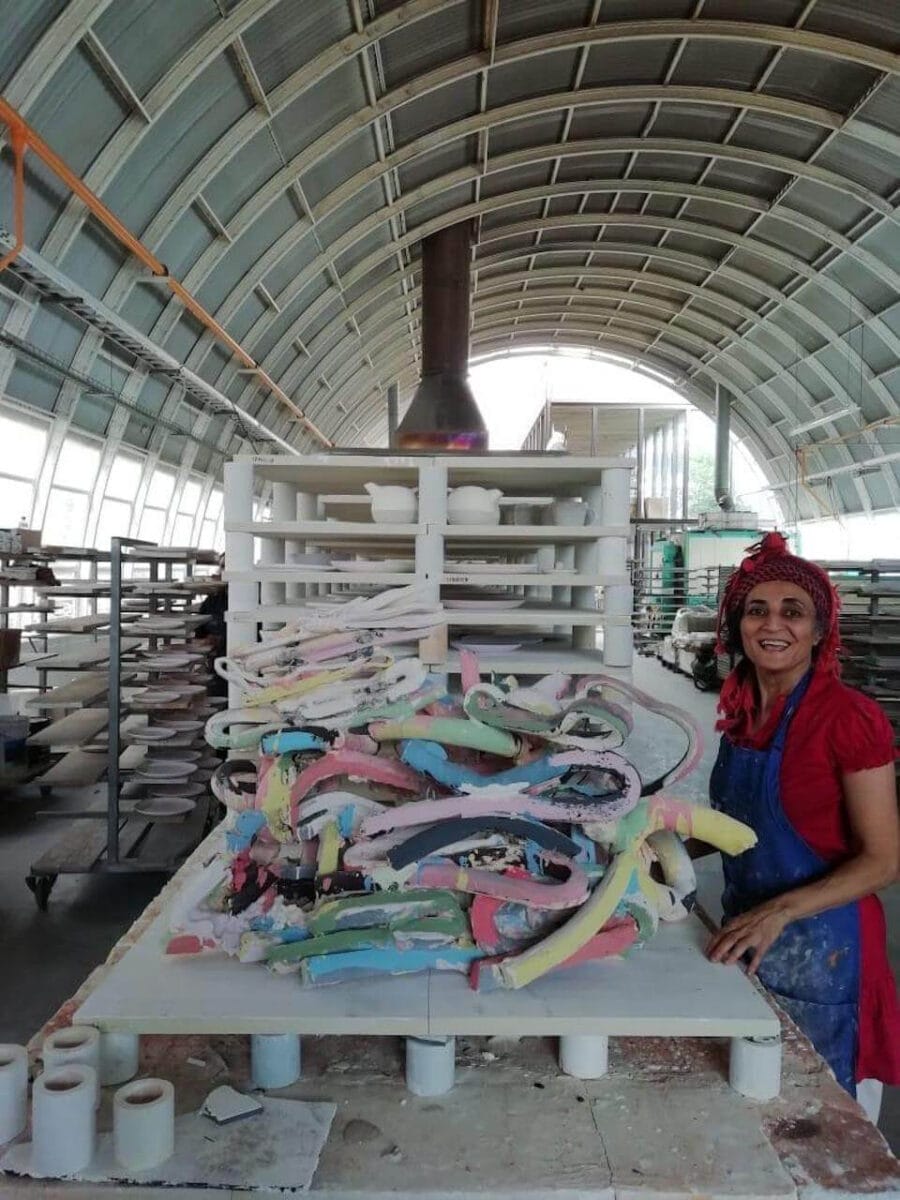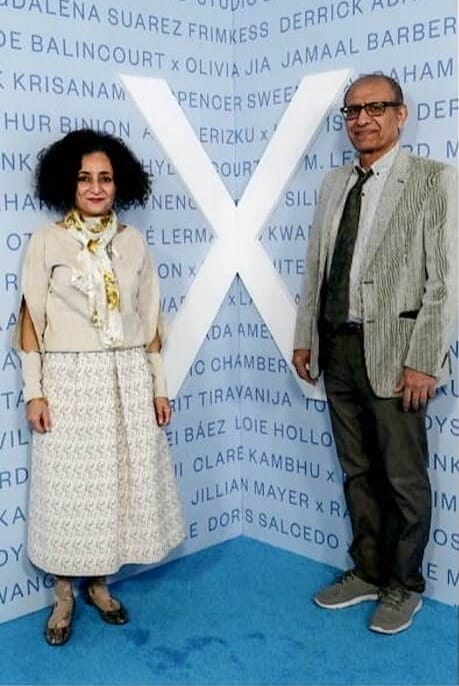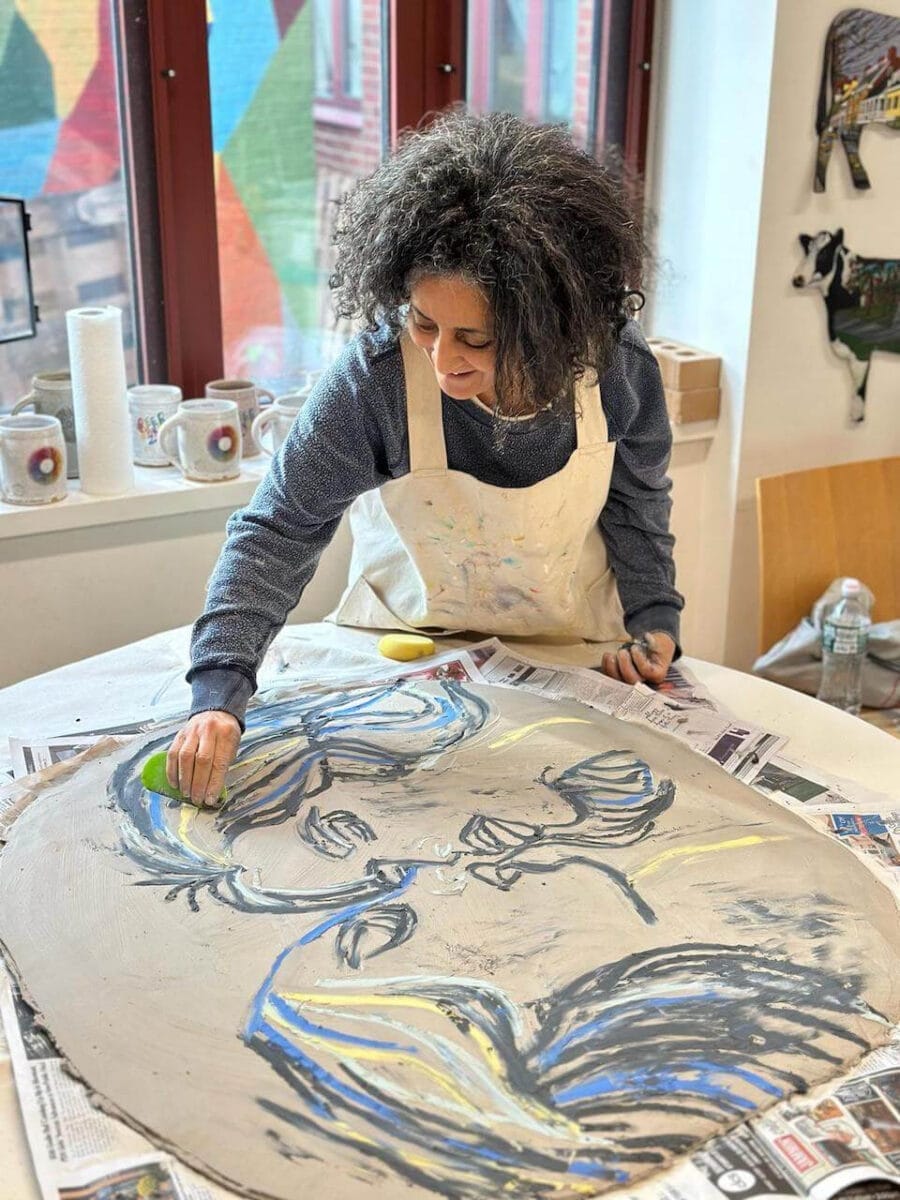Gardens in History and Art
From the Gardens of Babylon allegedly created by Nabuchodonosor (605-562 BC) to those of Pharaonic Egypt, Persia, Greece and Rome, gardens have been an integral part of all civilizations. Often associated with a Paradise Lost, a place of seduction, pleasure, and lust, gardens have also been omnipresent throughout the history of painting and of visual arts. They are deeply embedded in our cultural heritage and collective memory.
Despite the well-known gardens of Monet in Giverny and those of minimalist Land Art from the 1960s, the garden, understood as a site of artistic creation, still remains inadequately defined. Words and categories are lacking to address the nature of gardens as a public space of contemporary creation which is both ephemeral and hybrid, sitting at the crossroads between art, architecture, and landscaping. Women artists especially have been overlooked in this artistic domain.
Innovating the Genre of the Artistic Garden
Resonant with Le Nôtre’s geometrical garden parterres exemplified in the tradition of the baroque French garden (notably Versailles or Vaux le Vicomte) which subordinate nature to symmetrical patterns, Ghada Amer’s gardens subtly set the garden and its traditions on a new and original path.
Ever since she built and designed her first garden entitled “L’Espace à effeuiller les marguerites” in 1997, Ghada Amer has introduced the concept of the garden as a space of artistic creation. And over the last twenty-five years, she has conceptualized, drawn, built, and planted gardens, placing her visitors centerstage in her creation, inviting them to play an active role in this innovative artistic space. As a pioneer, she interrogates the boundaries between genres as well as their definitions. Walking through Ghada Amer’s gardens is tantamount to redefining our relationship to a public and artistic space, to language, words, and nature.
Between Politics and Aesthetics
Ghada Amer’s approach to the garden as an artistic site situates her production at the intersection between politics and aesthetics. In “Women’s Qualities” (2021), the words used to construct the garden beds and the plants that inhabit them are not selected at random. Each word with its visual form and grammatical structure is in dialogue with the symbolism of the flowers. Together they innovate a new visual artistic language.
The Grammar of Women’s Qualities
Adjectives
In this new visual lexicon, we encounter several adjectives: Strong, Resilient, Beautiful. From a grammatical standpoint, adjectives modify or change the meaning of words. The adjectives used in “Women’s Qualities” (2021) are thus by definition active, as much as they are descriptive.
Present Participles
Moreover, Ghada Amer’s decision to use present participles (Loving, Caring, Nurturing) in that same garden subtly suggests the persistence of the present moment. These verb tenses also highlight the ongoing supportive dimension of women’s qualities.
One Past Participle
The only past participle used in the Women’s Qualities garden is Determined. Grammatically, past participles refer simultaneously to past, present, and future. Thus, to be “determined” implies to be determined throughout these time periods: past, present, and future. From this unique standpoint, Ghada Amer’s Women’s Qualities consecrates a timeless memorial for women’s determination and resilience. In this novel conceptual frame of the artistic garden, women are centrally positioned in language, and their enduring qualities etched in hardy, drought-resistant plants.
Symbolism of Plants and Flowers
The words that compose this garden take on a new dimension as they interact with the native American and South African plants that adorn the seven flower beds. Each of the plants flower at different times, constructing a palette of colors and mapping a new sensory cartography.
LOVING — Chuparosa (Justicia californica) is a plant whose name is derived from the Spanish verb chupar, to suck. It attracts Hummingbirds, symbols of love and happiness but birds that can also be ferocious fighters. Likewise, loving can be double edged, making women both tender and fierce.
BEAUTIFUL –- Angelita Daisy (Tetraneuris acaulis) is a bright yellow indigeneous wild flower that grows in deserts. It requires us to redefine beauty which exists everywhere even where nothing else lives.
DX Ghada Amer 3 Lance Gerber
CARING – Dwarf Morning Glory (Evolvulus x. ‘Blue Daze’) is a flower that is native of South Africa and that symbolizes unrequited love in several traditions including Japanese and Chinese mythology. This flower renders caring a universal quality of women.
STRONG – Blackfoot Daisy (Melampodium leucanthum) attracts bees and butterflies because of its pollen and medicinal attributes. This flower emphasizes the healing dimension of women.
RESILIENT – Golden Barrel (Echinocactus grusonii) is a spherical shaped cactus recognized for its curative properties that help recenter energies. As a symbol of resilience, this plant draws attention to women’s power, healing, and mediating capacities.
NURTURING – Mexican Bush Sage (Salvia leucantha) is a well known medicinal plant which is regularly used in a number of rituals of indigeneous cultures. Similarly, women’s nurturing qualities reconnects us with indigeneous medicine, forgotten practices, and healing traditions.
Women’s Qualities or A Monument to Women
This meditative flanerie through Ghada Amer’s artistic garden is evocative of mandala gardens. And indeed, Ghada Amer’s circular shaped garden, use of medicinal plant species ,and indigeneous desert flora invite a meditation on women’s qualities and urge us to ask hard questions about stereotypes, assumptions, and women’s potential. Ultimately, this flanerie leads us to the only two nouns used in Amer’s entire garden, those that make up the very title of her œuvre, Women’s Qualities. Though central to the artistic production, these two nouns are the only ones that are absent from the composition. Yet, they are the ones that orchestrate the whole installation and that guide us through its sensory pathway, ultimately inscribing women’s qualities into the register of proper nouns. With Women’s Qualities, Ghada Amer constructs an eternal monument in homage to women’s unrecognized resilience, strength, resourcefulness, and healing capabilities.






